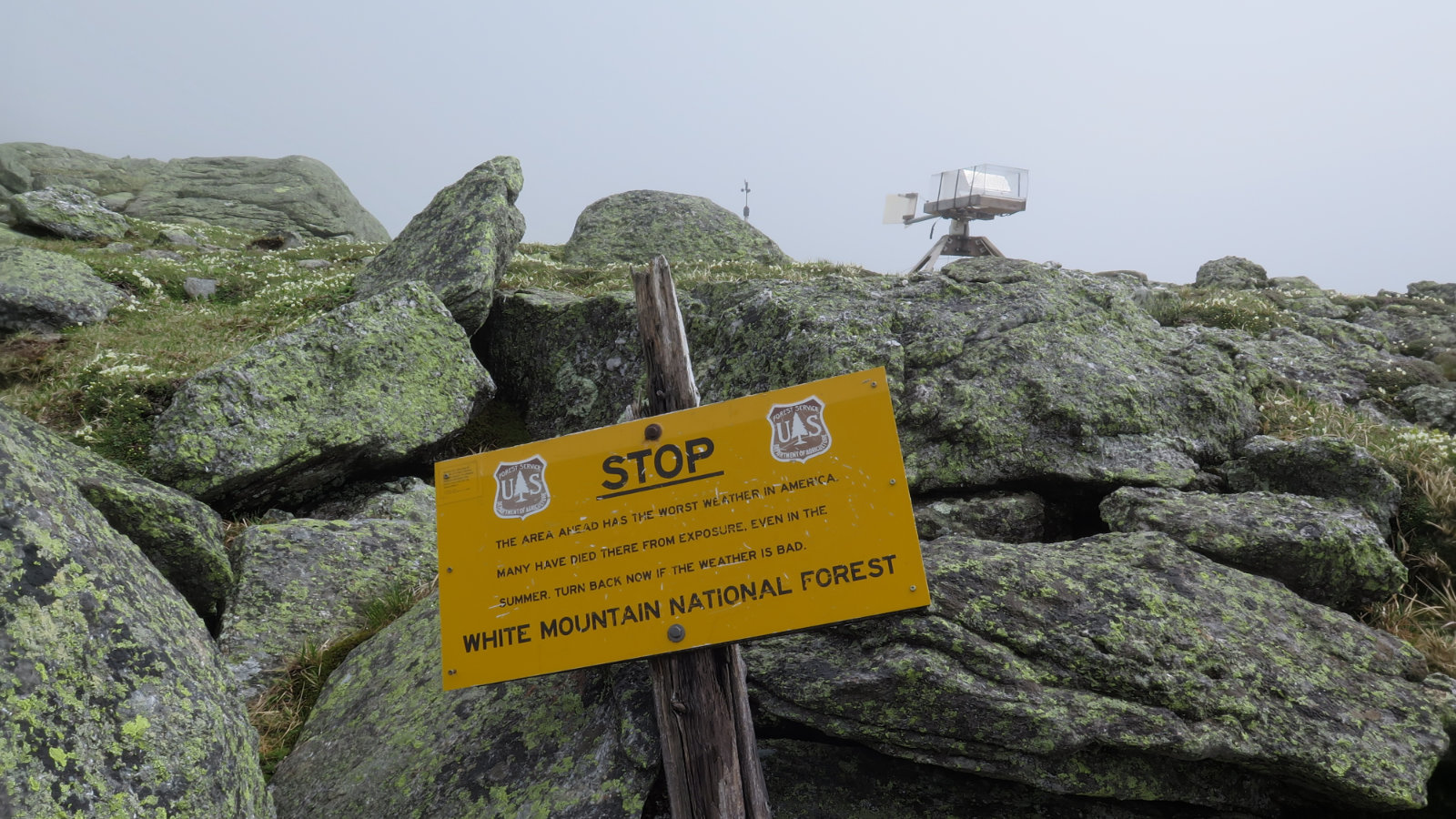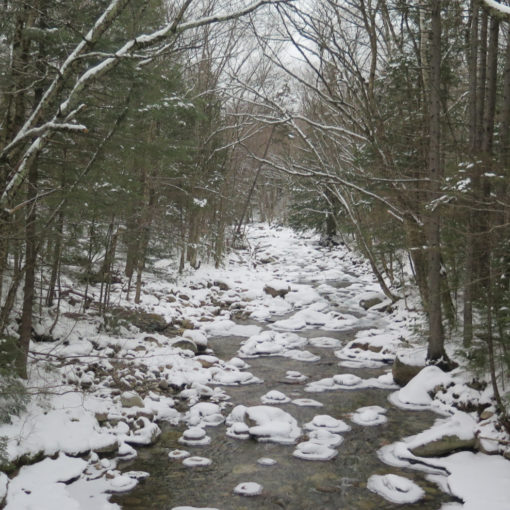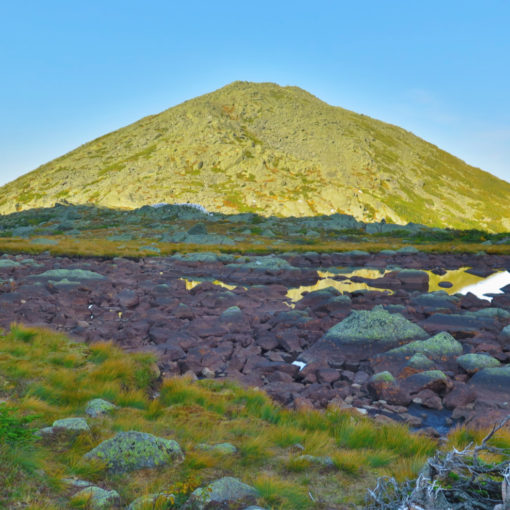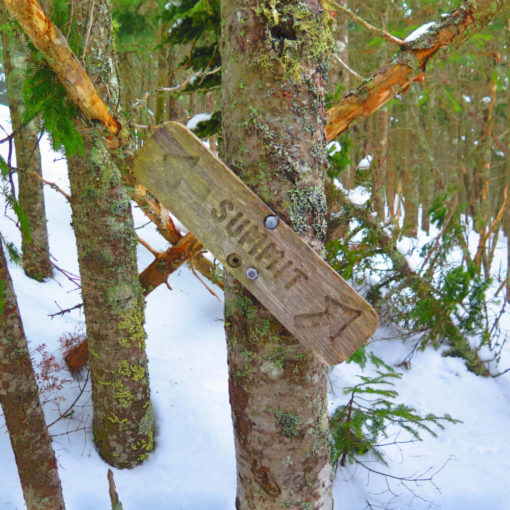What’s between your ears can get you in trouble!
I want to talk about the mental aspect of hiking. When you were a kid, your mom might have told you to turn off the TV and go outside — “a little fresh air won’t kill you.” And mom was right: fresh air does anyone a world of good. To stay safe outside, we do our homework first. We look at the trail guides, check out the map, take in the weather forecast. Things look good, so we load up the car, have a last cup of coffee, and get going. Brimming with confidence, we set out from the trailhead, our group full of hope and expectation. Are we really gunning for unexpected trouble? Counter intuitively, sometimes yes.
That’s not to say our judgement is the proximate cause of our misfortunes. Nor do I want to say most of us actively make unquestionably dumb choices — of the sort you see in videos, subtitled “hey Bubba, hold my beer.” Sometimes, our bad luck boils down to unconscious factors that most of us don’t even know are there, occasionally things that are biologically hardwired. But knowing what you’re up against is how you win the battle. Fortunately, a lot of work has been done to study these cognitive stumbling blocks.
Right off, I want to make a strong suggestion. It might initially come across as a bit morbid, but stick with me a moment. If you’re not already in the habit, read accident reports. There are some very good sources. One is the Mount Washington Avalanche Center. Another is to subscribe to the AMC’s Appalachia, which has an analysis of recent accidents, mainly in the Whites. And the American Alpine Club produces an annual digest of significant mountaineering accidents in North America. By analyzing accidents, we arm ourselves with the knowledge that helps us avoid those same fates. And in so doing, those who perished will not have done so in vain. I can’t think of a better way to honor them.
OK, now back on with things…
Heuristic Traps
The first mental factors are heuristic traps. A heuristic is any kind of technique, be it a rule of thumb, educated guess, intuition, trial and error, or that kind of thing, that’s used to make a decision in light of poor or incomplete information. They’re used when you’ll be satisfied with “good enough to achieve my goal” and perfection is either unrealistic or an unnecessary goal.
So, for example of a heuristic, it’s a sunny day out in wintertime, there was a few inches of snow in the past couple days, and while you look on New England Trail Conditions for a report on your planned trail, you can’t find one that’s recent enough to give you a concrete sense of what’s going on. But you snoop around and extrapolate from what you can find. There’s a couple reports from mountains in the vicinity. They’re in a weather shadow that your mountain isn’t, but from your experience, you can make a pretty good guess that conditions are going to be within your comfort zone. Coupled with an easy trail, and a forecast that calls for seasonably warm conditions through your anticipated hike, you head out. The snow might have been a bit deeper in spots, and you had to work harder than normal here and there, but overall, you have a good outing — everything fit into your mental model based on the incomplete information you were able to obtain.
Now, the traps are where you’ve got a baseline of knowledge, you’ve assembled all the information you can, but your better judgement gets twisted. And as a result of these traps, maybe you get lucky and only have a close call, or perhaps you get unlucky and had a poor outcome. What are these traps?
FACETS
So let’s look at those traps and consider how we can avoid them clouding our better judgement. The acronym used by surfers and avalanche teams is “FACETS”: Familiarity, Acceptance, Consistency, Expert, Tracks, and Social facilitation. You can read a great report on this here, but I’ve condensed the salient points below.
1. Familiarity should be fairly obvious. We’ve been there before, we know nothing is lurking in the shadows, and so what can go wrong? And then you read the accident reports in the various outdoor journals. We’ve all been complacent because of familiarity. It’s rare that we do so in the mountains, because for most of us, we spend a tiny fraction of our daily existence there. So to bring that home, ask how many times you’ve done something silly in the kitchen or somewhere similar, and were able to trace it back to letting your guard down because you were familiar with it. Another good one is “I don’t need my seatbelt, because it’s just down the block.” How much more familiar can you get than that?
2. Next one is Acceptance. Another way to put it is peer pressure. We want to be part of the club. We don’t want to be the odd one out, and groupthink takes over. Now, when it’s half a dozen people setting out from the trailhead, this application is obvious. But what about the solo hikers? How many of us are truly solo? Even when we’re out there alone, consider how many of your actions are inspired by the people you’ll be sharing stories with later. It’s either been awhile since these have hit the news, or maybe I’m reading the wrong newspapers, but there was a period where people were falling off cliffs everywhere, trying to get the epic selfie for their social media sites. Yes, it’s removed from the straight-up groupthink you’d experience in a hiking party of any number, but it’s not that far removed, when you think about it. Those people were motivated by being accepted by their followers in the form of “likes” and page-views. Thankfully, there aren’t that many of those kinds of cliffs in the Whites, but there are plenty of places where someone could try for an epic shot. Just because you’re out solo hiking, doesn’t mean you shouldn’t be thinking of this. And it’s probably obvious, but when there’s an object of one’s affections involved, all bets are off. (On that, I’ll just say “don’t do anything you don’t want to have to explain to the paramedics.”)
3. Then we have Consistency. Once we make a choice, we tend to stick with it. It’s a kind of cognitive inertia. I planned on hiking this mountain. I’ve been hiking this mountain for an hour. I’m going to get there! And so on. We’re resistant to change. Here’s a little test: ask yourself if you’ve never said “I’ll stop for water in ten more minutes” because you don’t want to pause for even one minute while you get out your water bottle and have a sip. We’ve got that momentum, and we don’t want to break it, even though we’re parched. Sometimes that same logic pervades when the weather is failing quickly, and we should have broken that upward momentum an hour ago.
4. Experts, or those we perceive as experts, also sway our better judgement, even when those experts are having a bad day. Outdoor journals occasionally tell the tale of a guide who got disoriented, injured, or otherwise had compromised judgement, and clients had to step in and take charge. It happens. Sometimes the best thing you can do is say “no”, out loud, and force a discussion on what’s been planned. But that takes an awful lot of gumption — not something everyone will feel comfortable at doing. And don’t think experts only come in the guise of formally trained guides. We all have those friends who appear authoritative on various topics, whom we regard as experts. Don’t think the expert needs to be at hand throughout the trip, either. I can recall a time when I asked an AMC staffer at Pinkham Notch about a hike. He gave his expert advice, and then later admitted that he’d never set foot on that trail. When someone tells you “that trail is fine!” don’t forget you can overrule his judgement the moment things get uncomfortable for your tastes.
(And if you’re the person everyone is regarding as the expert, keep your mind open to the idea that someone in your party might have noticed something you didn’t. Everyone has gaps in their knowledge. Don’t let your ego get in the way. You can’t fool Mother Nature.)
5. “Tracks” is really a reference to “first tracks” that skiers relish. But it speaks to those perishable opportunities that we all live for. We’ve all had those bluebird days in late autumn, when we remark “wow, not going to be that many more of these!” It’s an example of a perishable opportunity that spawns bad decision making. As experienced hikers know, Mt Washington is shrouded in clouds more than half the time on average, and that doesn’t even slightly mean you get a perfect view the rest of the time. So what happens when you hear that the summit is forecast to have clear skies and “passable” weather when you have a day off? After dark, it’s forecast to get much colder, and the winds are expected to increase to hurricane levels. Are you going to chance it for that rare opportunity?
6. The last one is Social facilitation, and it’s not so much the fly-by-night “hey Bubba, hold my beer” but more a bit about showing off, coupled to a confidence (or perhaps more correctly, an over-confidence) in one’s skills. We tend to do this in groups more often than when we’re alone, notably when we feel that we’re particularly good at a skill. Skiers know there’s always someone going off a jump to impress his or her peers, and maybe sticks the landing most of the time. But there are those instances when someone thought they had things under control, yet bit off a little more than they could chew. McCammon’s paper makes a salient observation that most ski mogul trails tend to be located under ski lifts, where skiers have a captive audience.
The poor judgment at play in social facilitation can also be spurred by social media. Think of the things you might have seen, and thought “Huh. That guy got away with it.” You likely didn’t see yourself at that same place, trying the same stunt, but the knowledge that someone did it might cloud your decision making when you’re in a similar situation.
Risk multipliers
For our next mental factors, we have risk multipliers. These are things that affect the decision-making process in a way that enhances its effect. On one hand, maybe your trip leader has a degree in outdoor leadership. Someone else has a wilderness EMT certification. And there are a couple guys who were Eagle Scouts back in the day. Things are good!
But those multipliers can go the other way, too. Consider the effects of lack of experience. Or mental or physical depletion. Or that you have cognitive “anchors” that color your judgements.
Obviously, when you haven’t been on a particular trail before, that affects how well you can anticipate what’s ahead. On a trail you know well, if you’ve only got so much sunlight left, you can decide whether to continue on, or whether to skip the summit, and content yourself with having had a nice walk in the woods. But how else could that affect you in a group? What if the entire group is making a choice on whether to continue? You have no way of knowing whether they’re making a decision you’re comfortable with. If the decision is to press on, you can either go with the flow, or have a lonely walk back to the car. You can’t contribute to the discussion.
Does it mean you should shy away from potentially risky hikes? Not necessarily, but it does mean you should pick your hiking partners carefully, with your own degree of risk tolerance, ability, and experience in mind. Someone might not have done a winter Northern Presidential traverse, but has done a lot of winter hiking and camping, and so going out with his pals for that epic traverse might be a fine choice.
When you’re mentally depleted… we all know how we feel at the end of a long workday. Tired, can barely focus, slow. And those effects are going to be obvious. Ideally, when presented with a tough decision, the urge to just throw it in and head back to the car, or stop and make camp for the night, will prevail. But physical depletion has its cognitive effects as well. Studies have shown the effects of sleep deprivation as being equivalent to alcohol intoxication. You may not have been sleepless for the 24 hours that researchers found mimics the effects of a BAC of 0.1%, but couple that with the other physiological stresses experienced while hiking and backpacking, and it adds up.
Then there are cognitive anchors. This amounts to the first knowledge you have about a decision, and it has an outsized influence on all other “downstream” information that you gather. A great example is the prices of ordinary commodities. We all remember that when we were younger, things cost a lot less than they do today. So now, you look at the price of a new whatever, and you think “wow, that’s expensive.” But somewhere along the way, you neglected to consider that while those prices did go up, so too did your salary. And if you adjusted everything for inflation, chances are, your pay rose at a faster rate than the cost of those commodities. Yeah, bread isn’t fifty cents a loaf anymore, but people don’t think a $10,000 salary is a middle class income, either. So applied to the trail, maybe the forecast calls for afternoon clouds and falling temperatures, with a steady increase in winds, but right now, it’s sunny and mild — a fine day to head for the summit. Well, maybe, if you’re ready and equipped for it, but I’d certainly think long and hard about it.
A risk multiplier that shouldn’t be forgotten is the experience you have, or don’t have, being on the “sharp end.” That is to say, whether or not you’ve been the key driver, the key decision maker. In solo hiking especially, this is crucial, because if you can’t read the signs that are all shouting “turn around and go back home!” and subsequently, execute your escape plan, then you can get into irretrievable trouble. Entire books have been written about unfortunate souls, some of whom have lost their lives, because they lacked the key experience of taking control. It’s a learned skill, but at the same time, it’s a learn-able skill. It’s not just the skill of reading the weather, and the conditions of the trail and you or your group. It’s also the social skills of selling people on the idea that “we need to do this.”
The power of no
Now, on that point, I’m going to add something important, aimed at those who hike in groups. It’s taken from aviation, and for those interested, it’s a cornerstone of something called “crew resource management.” (Chesley “Sully” Sullenberger, of the “Miracle on the Hudson” aircraft crash, is a huge proponent of CRM. I’m a big fan of it, too.) My friends who fly medical helicopters for a living put it thusly: they fly with a crew of three. A pilot, plus a nurse and a paramedic. There’s also a dispatcher in the office. So that’s four people who are directly involved with a mission, and remain so involved through to the crew’s safe return to base.
When a call comes in, the very first question they ask is if the weather at the base, at the scene, at the hospital, and back at the base, plus all points in between, will be appropriate for flying the mission for its entire expected duration — and whether they’ll have enough fuel throughout. If anyone has a problem with the plan, everything is stopped until those concerns are resolved. They only lift off once consensus is reached. There is no “majority rules.” Or put their way, “It takes four to go, but only one to say no.” There is no hierarchy here: anyone’s “no” overrides everyone else’s “yes.”
I pointed out earlier that even experts have bad days. We’re all human. I know it’s tough to push back against experts — I’ve been there, and done that, and it never gets easier. But you have to create a culture within your group where everyone feels empowered to initiate a discussion at any time, on whether it’s still safe to continue on the present course.
Keep your ego in check
Lastly, I’m going to talk a little about how ego can get in the way. Sometimes, we want to push ourselves. We don’t want to quit. Or sometimes, we might feel like we can’t speak up without fallout of some sort. In the wilderness, there is little room for this kind of thinking.
I love pushing myself. I don’t want to quit. And yet, perusing my blog, you’ll notice I’ve turned around when it didn’t make sense to keep going. Tripyramid. Isolation. Owl’s Head. Washington. Jackson. Yep, I was disappointed. Didn’t regret the decision for one moment. The mountains have been there for 12,000 years. They’ll be there for a few days more, I’m positive. You can always come back, but only as long as you’re alive to do so.
Next, you have to make your needs known. The hiker who gets hurt and asks for help can probably have an easier time getting off the mountain — fellow trampers can share the load, and provide a shoulder to lean on. It’s a lot easier to self-rescue and get to the car a couple hours later than anticipated, than it is to sit and wait to be carried out, and maybe you get off-mountain at 2 in the morning.
I’m going to wrap things up there for now — this has been a huge post. Hopefully I’ve given everyone some things to think about, and maybe it makes you all safer on your hikes. If you have questions or comments, as always, feel free to air your thoughts in the comments section. If you have friends or colleagues you think would benefit from my writing, please by all means, I’ve included share buttons below for social media. Help get people informed.
As always, stay safe out there.
If you enjoy reading these posts, please subscribe — stay in the loop! Your email will only be used to alert you of new posts — typically 1-2 times per week. I will not use or share your email for any other purpose without your express permission. And feel free to share via social media using the buttons below.





One thought on “10 Essentials For Safe Hiking: Mental Factors ”